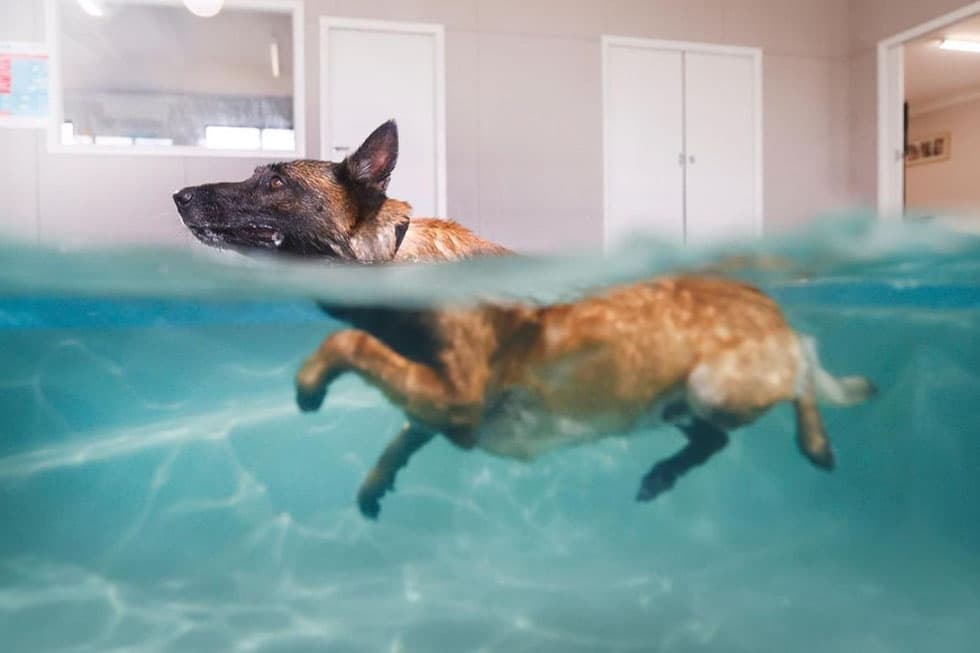A Deep Dive into Canine Hydrotherapy: More Than Just a Swim

Ever watched your dog struggle with stiff joints after a long walk, or worry about them post-surgery? It's a heart-wrenching sight. I remember my old Labrador, Max, whose arthritis made every step a challenge. We were looking for something, anything, to give him relief without more strain. That's when we discovered the world of canine hydrotherapy.
Think of it as a super-powered, controlled swimming session. It's a form of low-impact exercise for dogs that takes place in warm water, usually kept at a balmy 26-30°C. Why is this so special? The magic is in the buoyancy. The water supports your dog's body, taking all the pressure off those sore, weak, or healing joints. It allows them to strengthen the exact muscles they use for movement but completely avoids the jarring impact of running on hard pavement. This makes dog water therapy a game-changer for pups with arthritis or those recovering from an injury. It’s fantastic for everything from general fitness and weight management to reducing pain and inflammation in dogs who are lame or sore.
This isn't just for seniors, either. Pet rehabilitation through hydrotherapy is used for a whole spectrum of chronic issues: post-operative recovery, hip and elbow dysplasia, soft tissue injuries, cruciate ligament damage, spinal problems, and so much more. It's an incredible tool for building up muscle, boosting stamina, and even teaching a nervous pup how to swim in a safe, heated environment. Honestly, for a dog that needs to burn off energy, a five-minute swim in a hydrotherapy pool can feel like a 5k walk!
A Chihuahua's Remarkable Comeback Story
Let me tell you about a little fighter named Peanut. This six-year-old Chihuahua was dealing with a progressively worsening luxating patella—that's when the kneecap keeps popping out of place. Her vet was blunt: surgery was inevitable, and a ligament tear was likely on the horizon.
Peanut's owner, however, was proactive. Before the scheduled surgery, they started a six-week "prehab" course of canine hydrotherapy. After the operation, everyone braced for a long recovery. The vet estimated it would be at least four to six weeks before Peanut could even think about getting back in the water, with a total recovery period of around six months.
But Peanut had other plans. Thanks to the muscle and stability she'd built during prehab, she was cleared to return to the pool just two weeks post-op! After another round of hydrotherapy sessions, combining pool time and underwater treadmill work, Peanut made a full recovery in less than three months. That's half the time her vet predicted! It’s a powerful testament to how this therapy can supercharge the healing process.
The Real-World Perks of Dog Water Therapy
So, what’s the big deal? What can you really expect? The benefits are massive and touch on nearly every aspect of a dog's physical and mental well-being.
- Supercharges Post-Surgery Recovery: Just like with Peanut, it can dramatically shorten healing time.
- A Helping Hand for Overweight Pups: It’s an effective, joint-friendly way to burn calories and build fitness.
- Golden Years Comfort: Provides immense relief and gentle exercise for arthritic and senior dogs.
- Peak Performance Training: Conditions working, show, or sporting dogs, building muscle and stamina.
- A Fun & Safe Way to Learn: Teaches dogs to swim in a controlled, positive environment.
- Empowers Disabled Pets: Allows dogs with mobility issues to exercise and feel a sense of freedom.
- Strengthens Your Bond: Participating in sessions can be a wonderful activity to do with your dog.
- Reduces Swelling & Inflammation: The hydrostatic pressure of the water helps reduce swelling in joints and tissues.
- Boosts Body Function: Improves circulation, flexibility, range of motion, balance, and coordination.
- Builds Confidence & Mental Stimulation: The new experience and physical achievement are great for a dog's mind.
A Lifeline for Ailing Pups: Conditions That Benefit
Hydrotherapy is often prescribed by vets for a specific list of ailments because it's just that effective. It provides support and allows a dog to exercise muscles even while nerve regeneration or structural healing is taking place.
- Post-Surgical Rehab: Especially for knee surgeries (like ACL repair), hip replacements, or FHO.
- Spinal Issues: Intervertebral Disk Disease (IVDD), Spondylosis, and Degenerative Myelopathy.
- Congenital & Degenerative Conditions: Hip/Elbow Dysplasia, Luxating Patella, and Degenerative Joint Disease (DJD)/Osteoarthritis.
- Limb Issues: Following amputation, fractures, or soft tissue injuries.
- Neurological & Cognitive Support: Can aid dogs with neurological disorders or even early cognitive dysfunction.
Ready to Take the Plunge? Here's How to Begin
Getting started is straightforward. The first and most important step is to talk to your veterinarian. A professional hydrotherapy center will require a vet referral form before your first session. This isn't just red tape; it's crucial for your dog's safety. The form gives the hydrotherapist a complete picture of your dog’s medical history and specific needs, allowing them to create a perfectly tailored rehabilitation plan.
And remember, it’s not all about medical conditions. The warm water can be incredibly calming and stress-relieving. Plenty of perfectly healthy dogs do it just for fun. After all, what dog doesn't love chasing a ball or a Frisbee in a warm, private pool? It’s pure joy.